In today’s blog, Assistant Curator, Kirsty Young, delves into our collection for this Valentine’s Day inspired blog, tracking the evolution of love and relationships from wooing to marriage using items from our collection.
Today in celebration of Valentine’s Day I am going to delve into the collections of Bradford Museums and Galleries and pick out a few of my favourite pieces that have been designed as tokens of affection. We will effectively go on a romantic journey from courtship, to proposal and ending in marriage. From the humble to the elaborate each piece that I am going to share with you today has its own unique beauty.
As I have already mentioned Valentine’s Day I thought I should share some objects that are directly linked to this celebration, and they also start us on our romantic journey with some innocent wooing; I am of course referring to Valentine’s Day cards.
It was during the 1700s, that we first saw cards that are truly recognisable as Valentine’s Day cards. These early cards were handmade, and they were usually delivered anonymously by slipping them under the recipient’s door, a little bit like at primary school when you would slip your handmade cards into each other’s work trays!
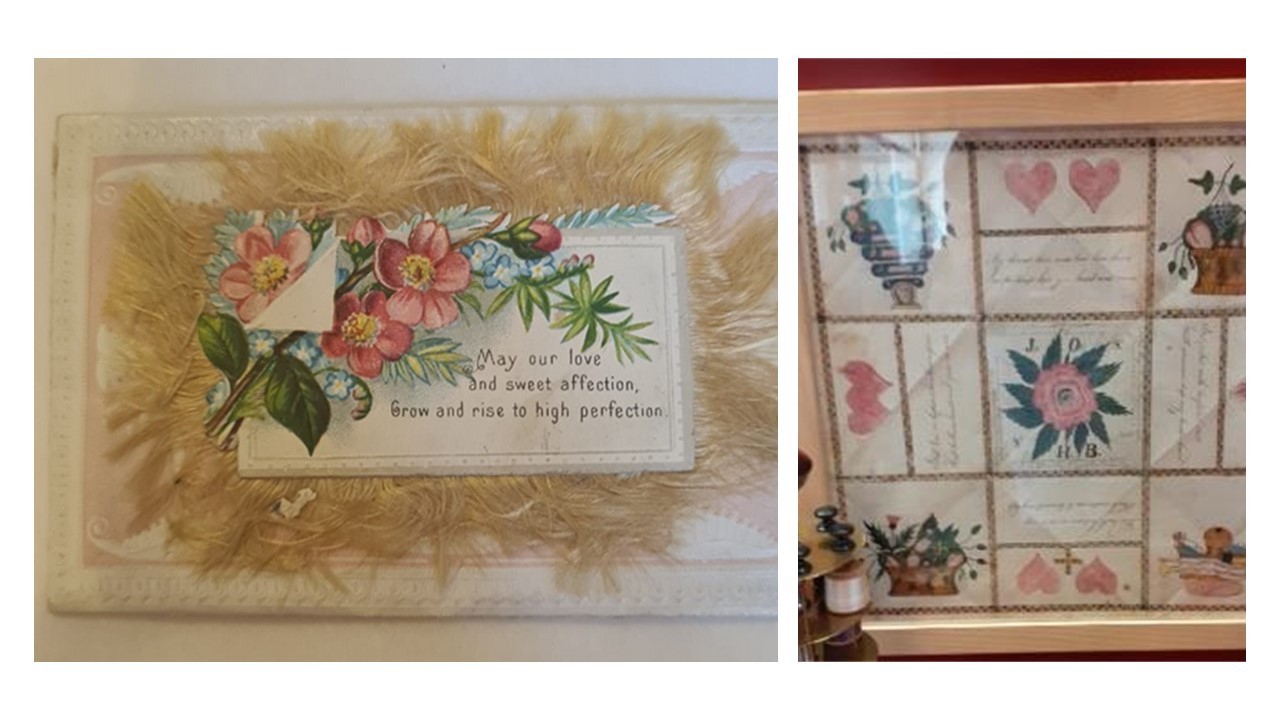
The oldest known printed Valentine’s Day card is housed close by in the collections of York Castle Museum. It was printed in London in 1797, and although it was printed it still has a handmade element to it. As colour printing was not yet available the sender of this card has hand coloured the card which portrays an element of care and effort.
The modern Valentine’s Day card gained popularity during the Victorian era. With the printing process becoming more affordable it opened up the possibility of purchasing them to a much wider audience. In 1835, in Britain approximately 60,000 Valentine’s Day cards were sent by post. After the introduction of the penny post five years later, that number jumped to over 400,000.
We have a really beautiful selection of cards in the collection that would have been sent around the mid to late 1800s. These include complex cards which fold out, ones with embossing and fringing, ones with ornate cut paper and foil decoration and some which were even designed to be hung up as decorations. This little selection will hopefully give you an idea of the vast array of cards available, the range of techniques used and tastes catered for.
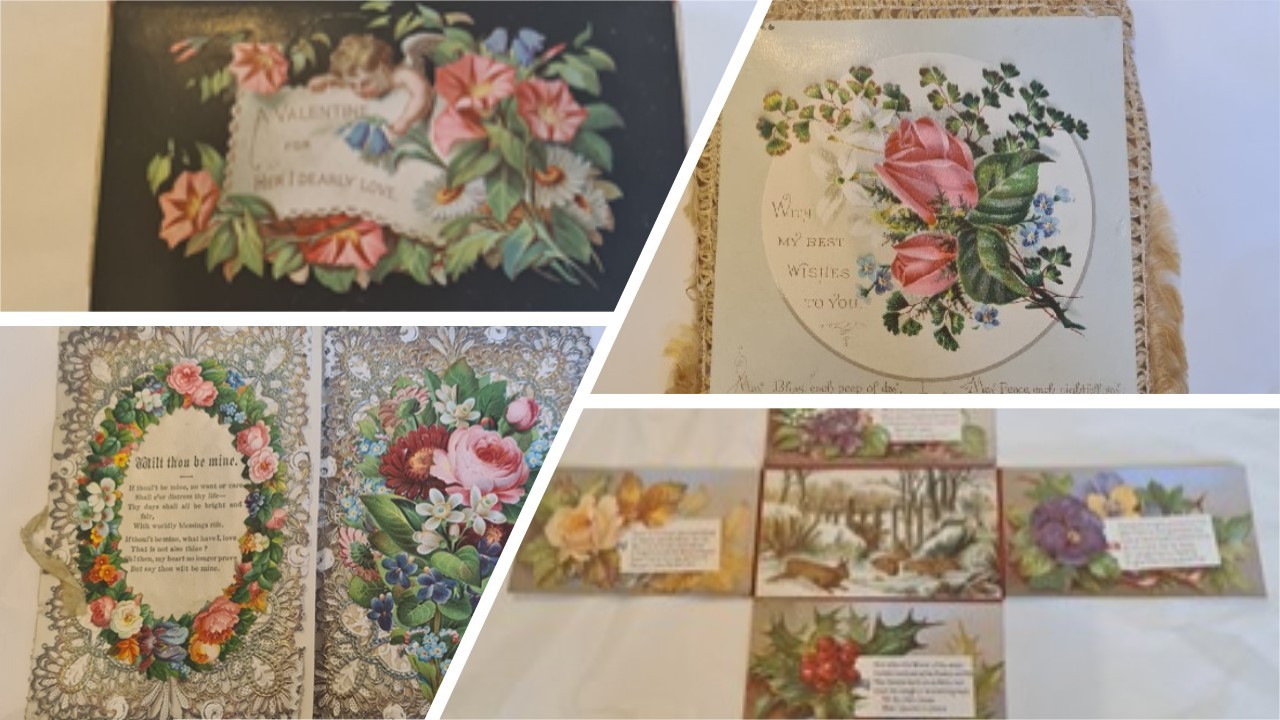
With cards and their postage now being far more affordable there was a shift in cards being sent for purely romantic purposes, and people began making and sending cards that were also humorous and insulting! Although the postcard below may not have been intended as a Valentine card it certainly gives you a taste of the humour involved.

Taking a step away from Valentine’s Day and moving towards other tokens of affection, this one is perhaps one of my favourite objects in the collections of Bradford Museums and Galleries. It is a mangle board which was designed to be used alongside a rolling pin to press and smooth laundry. These boards originate from Scandinavia. The oldest known mangle board to be found is Norwegian and has been dated to the early 1400s. Mangle boards which predate the 1600s all have a simple shape, discreet ornamentation and plain handles. This simple design suggests that at that time, the boards were purely domestic tools with a utilitarian purpose only.
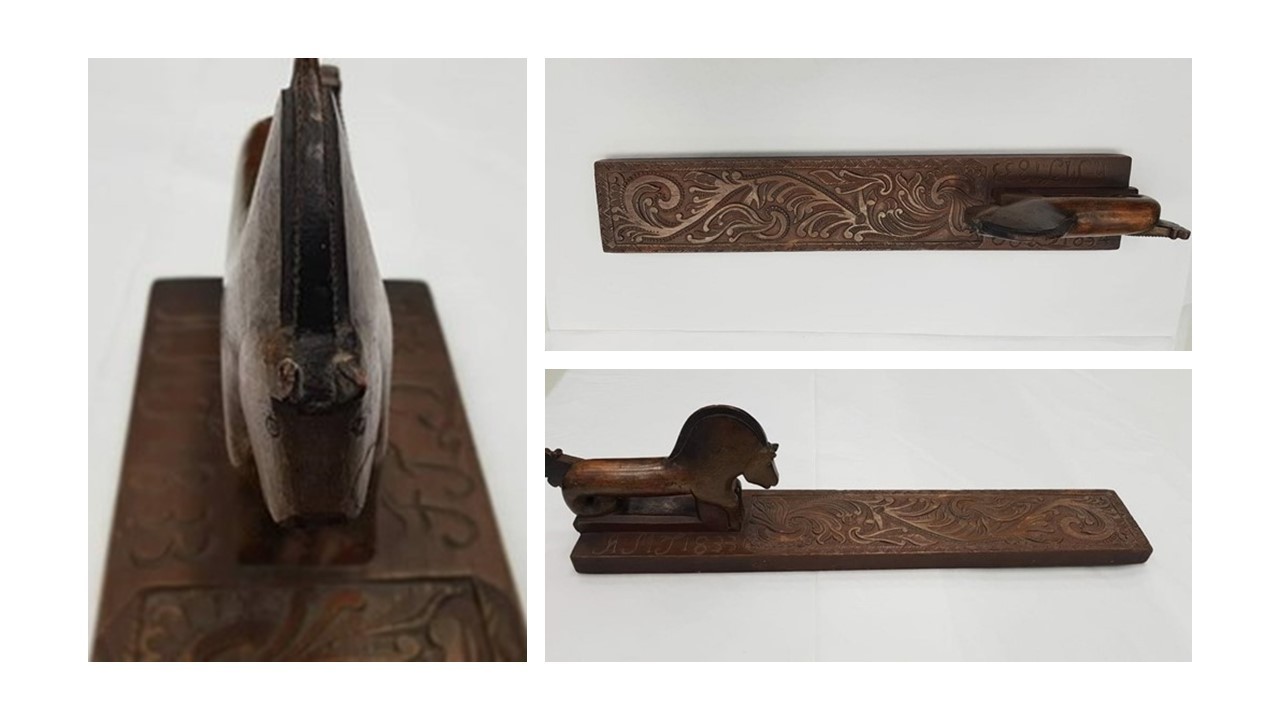
It was in the 17th century that these boards went from being purely functional objects to an item that a man would offer as a gift of courtship to his bride to be. You may think hang on I don’t think I’d be that impressed if I was gifted an iron as a sign of love and affection but when you look at our example you may change your mind. During the 17th century mangle boards began to be decorated with elaborate carvings and handles shaped into the forms or horses, mermaids and lions. The workmanship and time that has gone into this one here is outstanding, with its handle carved into the shape of a kelpie and its top surface so ornately carved that there is hardly any space that has been left undecorated. I think I would definitely have been impressed if my partner brought it home for me. This bat has the recipient’s initials and the year 1833 carved into it which helps us easily date the piece but also adds that extra romantic touch which is what I love about these pieces.
There is another collection of objects that we look after which have many similarities to the mangle boards but their roots lie much closer to home. Those objects are knitting sheaths. Like the mangle boards they have a practical, domestic use. They were designed in the early 17th century to allow the user to knit while standing or walking, and helped to free up their right hand allowing them to produce knitted wears which could be sold whilst carrying out other income generating tasks such as carrying produce to market.
Knitting sheaths have been found in various districts across the country but we have a strong tradition of them here in Yorkshire. Sheaths were made in many different forms with each region developing their own favoured shapes. Many of them were made of wood, and like the mangle boards they were often carved by young men as love tokens for their sweethearts. We have a wide range of knitting sheaths in our collection, some are adorned with dates and initials, some have inlaid panels of mother-of-pearl, and some have glass panels which hold written verses on paper. Again it is the time and skill and personalisation that went into carving these pieces that makes them so endearing.
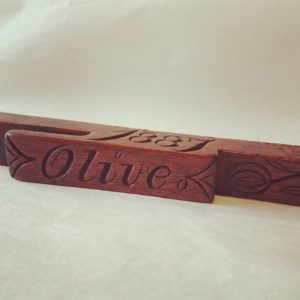
The final selection of items bring our romantic journey to a close as we have a look at some of the beautiful wedding thali pendants in the collection. Out of all the objects that I have shared with you so far these are definitely the most elaborate.
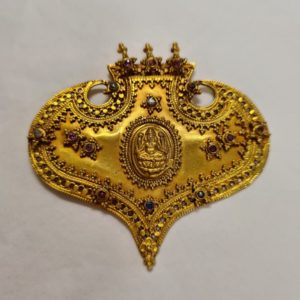
Thalis are an important part of wedding ceremonies in India. They were traditionally part of Hindu ceremonies but later became a part of converted Christian ceremonies too. They are usually tied around the bride’s neck during the ceremony and the three knots that are tied represent Urimai the power a husband gives his wife, Uravu which strengthens the relationship of the bride’s and groom’s family, and the third knot symbolizes that the bride is an important member of the groom’s family, although these meanings and traditions can differ between regions. The thali is a sign that the woman is now married in a similar way that a wedding ring does.
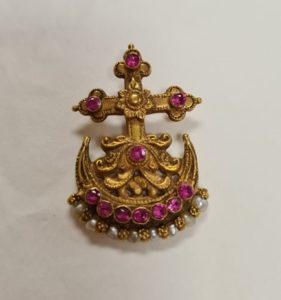
The design of the thalis can vary greatly depending on the religion and the districts that the families come from. Traditionally the thalis would not have had precious stones set into them, but this extra adornment is something that has become popular amongst contemporary brides.

We hope that you have enjoyed this journey from wooing to marriage through this selection of love filled objects.